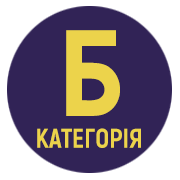IMPLEMENTATION OF IMMERSIVE TECHNOLOGIES INTO THE ATHLETES TRAINING SYSTEM
DOI:
https://doi.org/10.32782/ped-uzhnu/2025-8-37Keywords:
immersive technologies, athlete training system, virtual and augmented realityAbstract
The article demonstrates that the insufficiently substantiated and slow-moving introduction of immersive technologies into the athlete training system negatively affects the effectiveness of the training process itself.Athletes are frequently unable to overcome the so-called “barrier of personal capabilities”, which they are potentially capable of if they use exclusively traditional training methods. In contemporary high-performance sports, technological innovations have become the main factor that makes it possible to improve personal sports skills faster and continue to move forward towards more new achievements. Modern information and communication technologies of virtual, mixed, extended and augmented reality are able to provide significant advantages in the ways of achieving the desired results. For this reason, they are of interest for athletes, scientists, coaches, fitness instructors, teachers. However, the problem lies in the fact that the introduction of immersive technologies into the athlete training system is still at the initial stage of its development. The research process confirmed that the latest immersive technologies are already used in education, industry, and scientific research.They have also found their place in physical culture and sports. In particular, it has been proven that in the sports training system, these technologies significantly improve the effectiveness of athletes' training. An important conclusion is that the justification of the main tasks and ranking of indicators of the importance of immersive technologies for the training process allowed athletes and coaches to better understand their practical value.This affects the activation of the process of their implementation in the sports training system. It is assumed that augmented and virtual reality will quickly begin to be combined with other digital technologies such as artificial intelligence. And this will give a new impetus to the creation of even more powerful applications for the process of training athletes, which will further contribute to new sports achievements.
References
Віртуальність: Філософський енциклопедичний словник / НАН України, Ін-т філософії імені Г.С. Сковороди; [редкол. : В. І. Шинкарук (голова) та ін.]. Київ : Абрис, 2002. С. 92–93.
Дурманенко О. Віртуальний простір комунікаційних мереж Інтернету як елемент конструювання соціальної реальності. Науковий вісник Східноєвропейського національного університету імені Лесі Українки. Філософські науки. 2013. № 11. С. 89‒94.
Коркішко І. А. Переваги та недоліки використання віртуальної реальності у закладах загальної середньої освіти (зарубіжний досвід). Звітна науково-практична конференція Інституту інформаційних технологій і засобів навчання НАПН України : матеріали наук.-практ. конф., 11 лют. 2021 р. Київ / упоряд.: О. П. Пінчук, Н. В. Яськова. Київ : ІІТЗН НАПН України, 2021. С. 54–55.
Товт В. А. Застосування інноваційних технологій у фізичному вихованні і спорті. Вдосконалення системи фізичного виховання та спорту в контексті європейського розвитку : монографія / за заг. ред. І. І. Маріонди. Ужгород : РІК-У, 2024. С. 158–229.
Soroko N. V., Dzekunova I. V. The interaction participants model of educational process within STEAM- oriented educational environment of general education institution. Zhytomyr Ivan Franko State University Journal. Рedagogical Sciences. 2020. Vol. 3(102). 104–113. DOI 10.35433/pedagogy.







